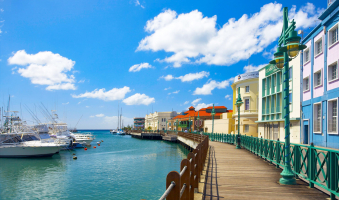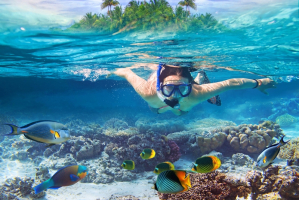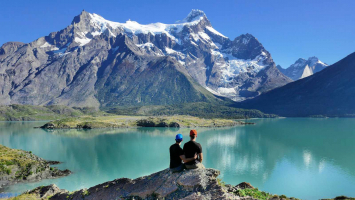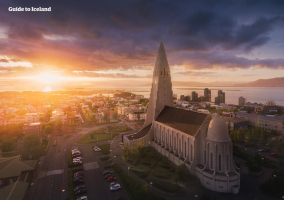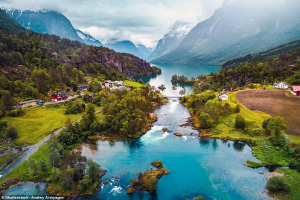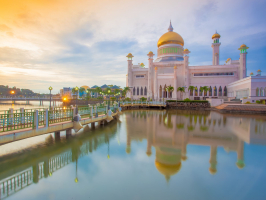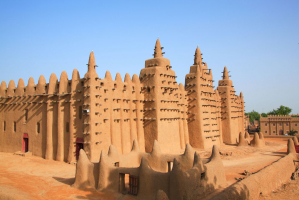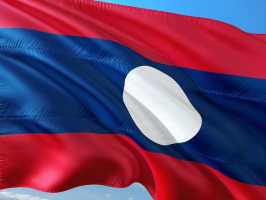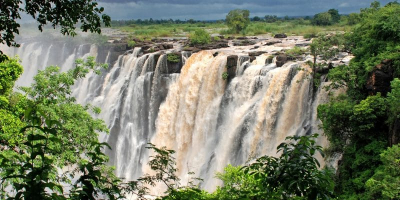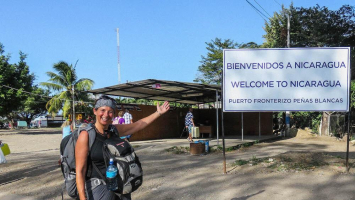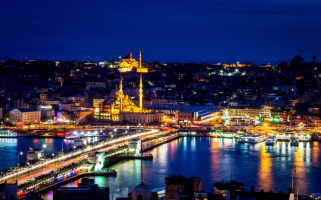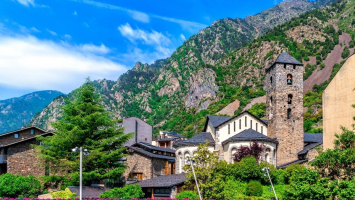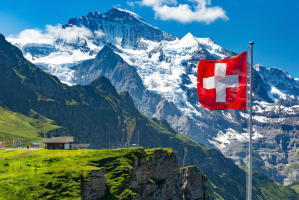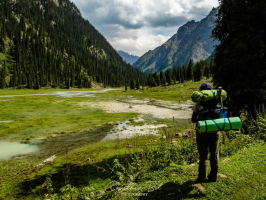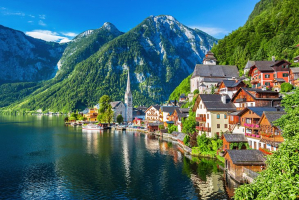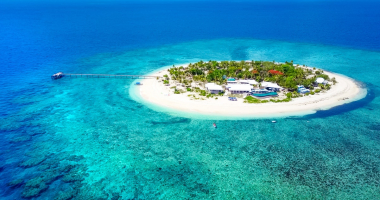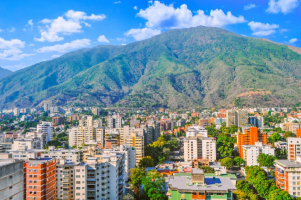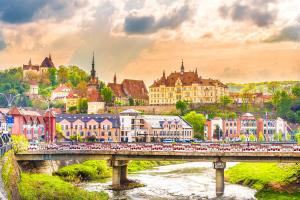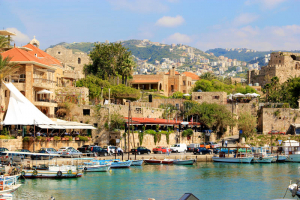Top 10 Things About Madagascar You Should Know
Madagascar is the world's fourth largest island by area, but many people are unaware of its existence. Madagascar's biodiversity is as fascinating as its ... read more...location at the crossroads of Asia and Africa. Madagascar is a stunning island with a diverse culture and beautiful flora and fauna. This island is well worth touring, with intriguing traditions and costumes, a rich pirate past, and ancient tree forests. Toplist has compiled a list of ten things about Madagascar you should know.
-
People travel to Madagascar for a variety of reasons, one of which is to witness the island's native lemur species. After their leisurely habits and nocturnal nature, their name originates from the Roman word lemures, which means "ghosts." While Madagascar has approximately 100 species of lemurs, Verreaux's Sifaka Lemur, also known as the dancing lemur, is one of the most well-known. Their bodies are white, with black faces, webbed hands and feet, and long tails. Its moniker comes from the fact that it spends most of its time in the trees and the only method it knows to get around on the ground is by leaping.
Lemurs play an important role in Madagascar's biodiversity. This is one of the things about Madagascar you should know. Lemurs are members of the prosimians family of primates, which were originally widely dispersed but have now been mainly displaced by monkeys. Lemurs have only able to survive and thrive due of Madagascar's isolation. Scientists currently identify roughly 60 different species of lemurs, a number that has risen in recent years as a result of the discovery of many new species, including two this year. Despite these discoveries, Madagascar's lemur diversity is much lower than it was when humans first arrived on the island some 2000 years ago. Since then, the island's major lemur species have been hunted to extinction, and habitat degradation has been exacerbated by climate change and human activity (especially land-clearing with fire).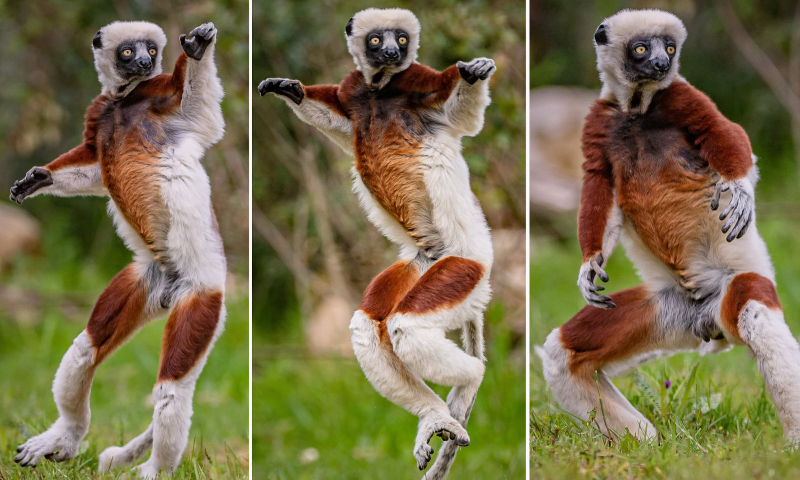
https://www.dailymail.co.uk/ 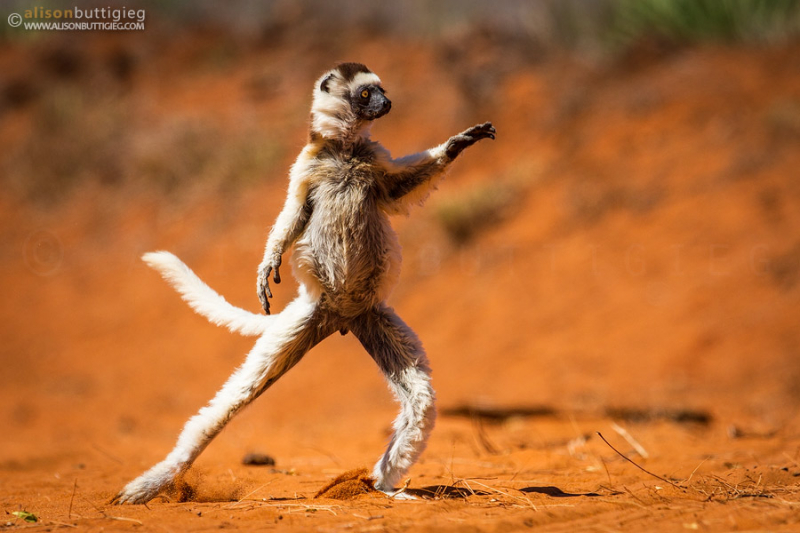
https://www.alisonbuttigieg.com/ -
There was an evil tyrant named Ranavalona who ruled Madagascar's sacred landscape. Because of her thirty-three-year reign of terror over Madagascar, she was dubbed "evil" by history. During the European expedition, Madagascar's monarch was Queen Ranavalona I.
She was born in 1788 in Madagascar and was also known as Ramavo. She was the daughter of a commoner. She was violent, vicious, and ruthless during her tenure as queen. She assassinated the true heir, her husband, and ascended to the throne herself. She was harsh during her rule, expelling Christian missionaries, terminating treaties with France and England, enslaving many of her own people, and executing anyone who dared to oppose her. The remains of her palace, the Rova of Antananarivo, can be found in the capital. To protect the kingdom's culture, traditions, and independence, Ranavalona launched a reign of terror. More than one-third of her subjects died as a result of her harsh leadership.
Ranavalona, often known as the "Mad Queen of Madagascar" and "Ranavalona the Cruel," was the most brutal queen in history due to her totalitarian control.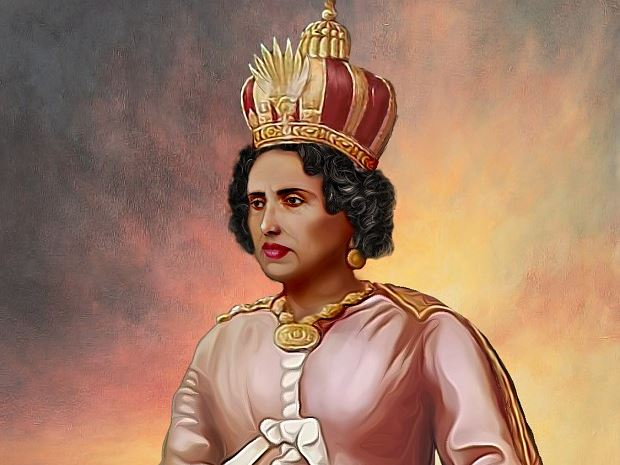
https://unitsfashion.com/ 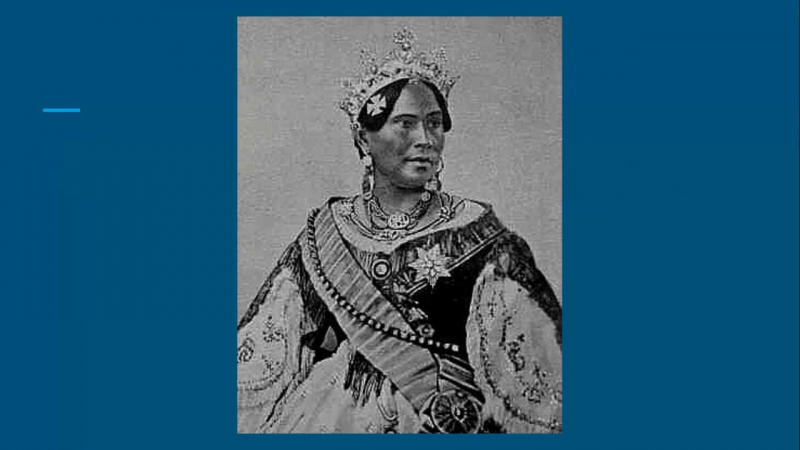
https://www.youtube.com/ -
When you think of baobabs, you probably think of the African continent as a whole. However, this island off the coast of Africa is home to 75% of the world's baobabs. This is one of the things about Madagascar you should know. One species lives in Australia, another in Africa, and Madagascar owns the remaining six. Visit the Avenue of the Baobabs in the Menabe region to really appreciate them. There are two dozen of the ancient trees standing proudly along a dusty road there. They were previously part of a tropical forest that was destroyed for agriculture, as did the scattered other baobabs in the region.
The Baobab is an iconic tree in Madagascar, defining the landscape of the island's south and west. With its massive, smooth-barked trunk and towering height, this majestic tree is remarkable in person. Six species have been identified worldwide, with eight of them being native to Madagascar. With its distinctive form, this huge tree can grow up to 30 meters tall. The trunk can reach a diameter of 9 meters and a circumference of 30 meters.
Baobab leaves are special in that they only appear for a brief time. Indeed, during the dry season, baobabs shed their leaves to prevent water loss, and these blossoms are stunning. They are available in a variety of colors, ranging from white to yellow to red. Flowering time varies according on the species. During the dry season in Madagascar, baobabs are a good supply of water.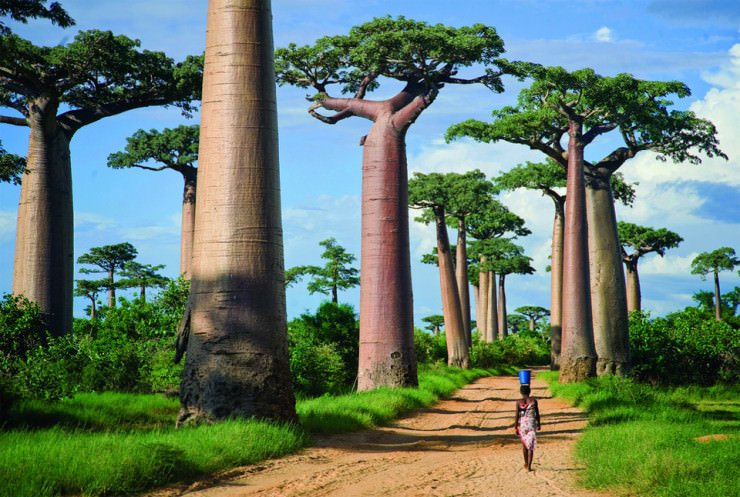
https://www.pandotrip.com/ 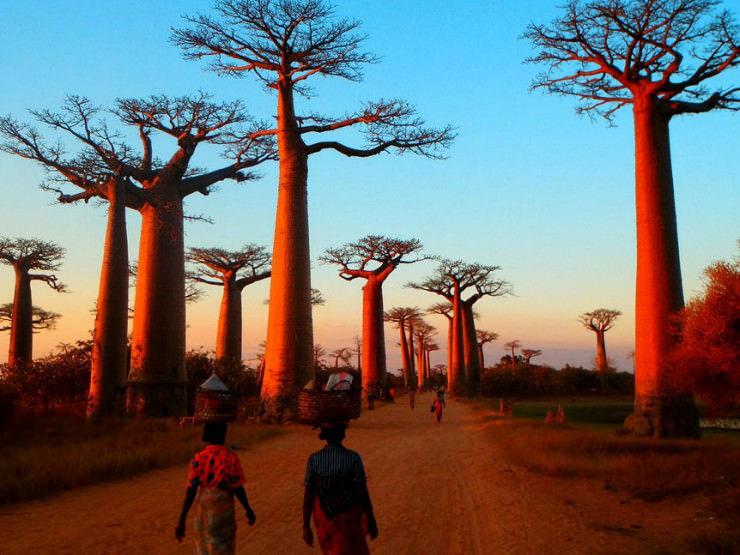
https://www.pandotrip.com/ -
Most countries have traditional clothing, but Madagascar is unique in that traditional clothing is worn by both men and women. This is one of the things about Madagascar you should know. A lamba is a traditional Madagascar garment worn by both men and women. The textile is a rectangular length of cloth wrapped around the torso and is particularly symbolic of Malagasy culture. Different designs, colors, and materials are required for different occasions. Lambas with red, white, and black stripes may be seen all over the island, whereas lambas with green and brown geometric patterns can be found in Skalava settlements. They're also useful for securing babies to the backs of their parents.
Traditional funeral lambas were frequently made of silk and cow hides, whereas daily wear lambas were more commonly made of raffia, pig skin, cotton, or bast. They could be a tie-dyed mess or a solid white cloth, or they could be striped red, white, and black cloth found throughout the island, geometric patterns in unique shades of green and brown produced by a handful of Sakalava villages, or brilliantly multi-colored, complex weaves favored by the pre-colonial Merina aristocracy. In addition to those made locally, it is now usual to find printed cotton or rayon lambas made in India for the Malagasy market.
The lamba is used for attaching children to mothers' backs or as a cushion when carrying a heavy object on top of the head, in addition to its everyday use as basic clothing. The lamba is also used to wrap the bodies of the deceased before they are buried in the family tomb. Following the ritual, these are placed on the dead as a mark of respect for their souls.
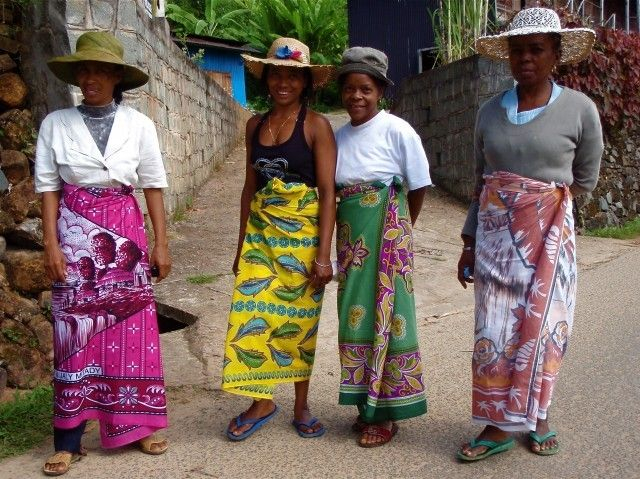
https://www.pinterest.com/ 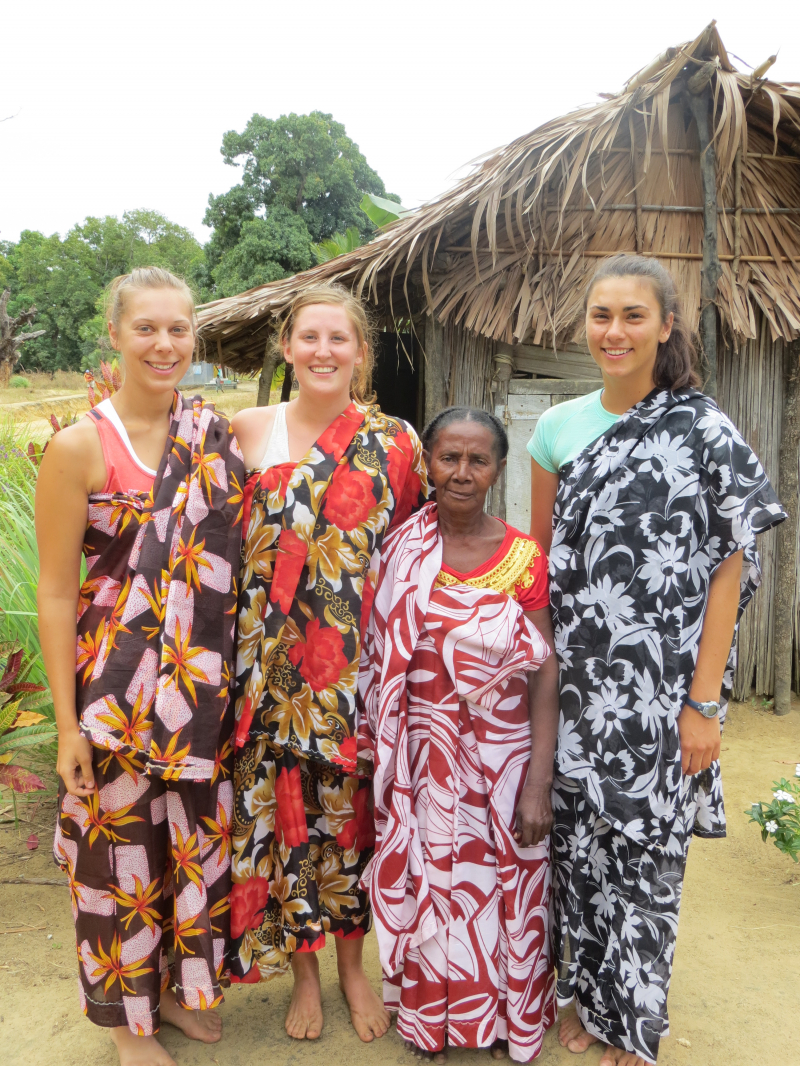
https://elainesamuelmadasgascar.wordpress.com/ -
Moraingy (Malagasy) is a weaponless, bare-fisted striking type of ancient Malagasy martial art that emerged under the Sakalava Kingdom's Maroseranana dynasty (1675–1896). It has since gained popularity across Madagascar, particularly in coastal areas, and has expanded to other Indian Ocean islands such as Réunion, Mayotte, Comoros, Seychelles, and Mauritius. This type of battle was traditionally restricted to young men, allowing elders to assess their physical health and strength while also allowing the youth to achieve status and put their abilities to the test. It is no longer limited to male fighters, and competitors battle without weapons, using only their fists and feet. This is also one of the things about Madagascar you should know.
Moraingy fights must be accompanied by music (typically salegy) in order to generate a trance-like condition in the fighters and participants, adding to the spiritual and communal experience of the battle. Participants in this event generally engage in dances during and between matches that are intended to anger rival party supporters, while the crowd cheers and jeers loudly.
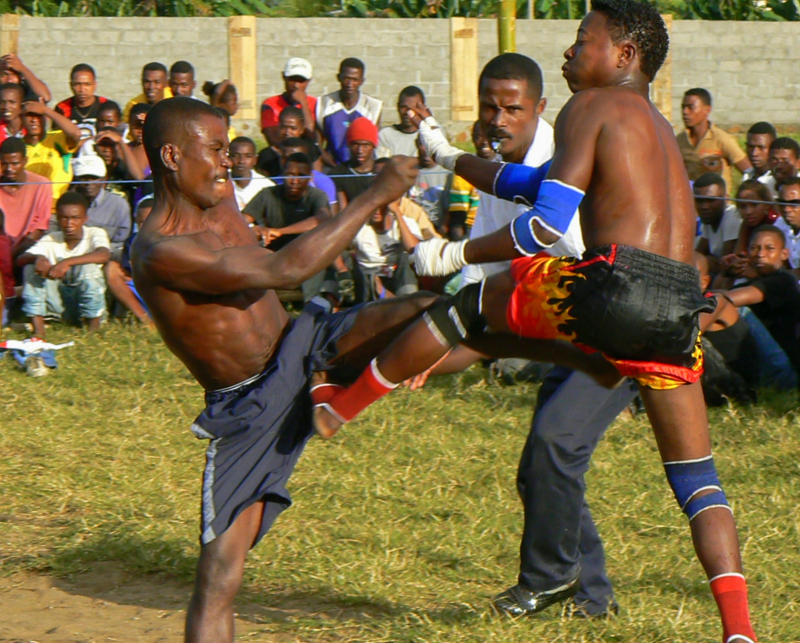
https://en.wikipedia.org/ 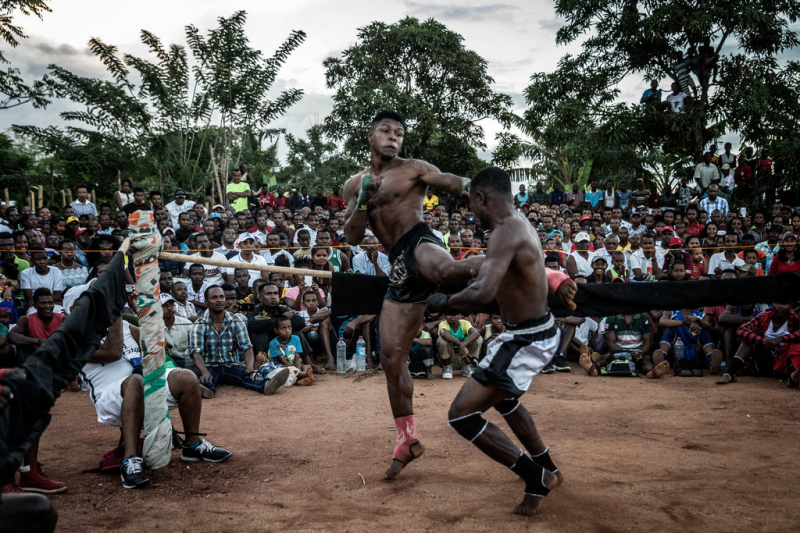
https://www.nytimes.com/ -
The various national parks and protected areas scattered over Madagascar are the finest places to discover Madagascar's diverse natural fauna. Masoala National Park in the northeast is the most popular destination. It has about 900 square miles of rainforests, marshes, mangroves, and flooded woods, home to a diverse range of lemurs, geckos, frogs, and birds. The Andasibe-Mantadia National Park in the east, the sandstone landscape of Isalo National Park in the southwest, and the Amber Mountain Reserve in the northern tip are all noteworthy parks.
Apart from lemurs, Madagascar is home to a diverse range of unique species found nowhere else on the planet. In fact, 90 percent of the island's biodiversity is unique. Explore and you'll come across unique creatures like the carnivorous fossa, 346 reptile species, and over 6000 endemic plant and tree species.
There are numerous unique creatures on Madagascar, but only a handful are dangerous to humans. There are almost no large predatory snakes or other very hazardous species on the island. Some species, such as the Malagasy tree boa, may appear to be dangerous, yet they are not. However, there are a few you should be aware of. However, the destruction of the natural ecosystem, which leaves the island's non-human residents highly vulnerable, is one of the most serious dangers to the amazing fauna. Deforestation, fires, erosion, and alien species are only a few of the major causes.
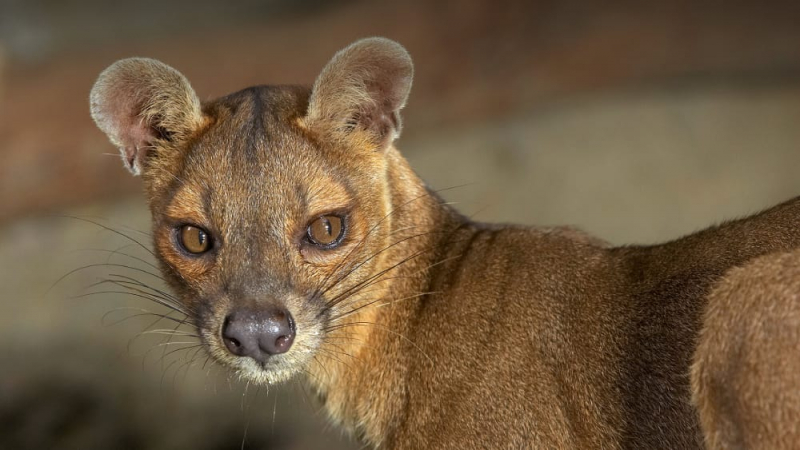
https://www.discoverafrica.com/ 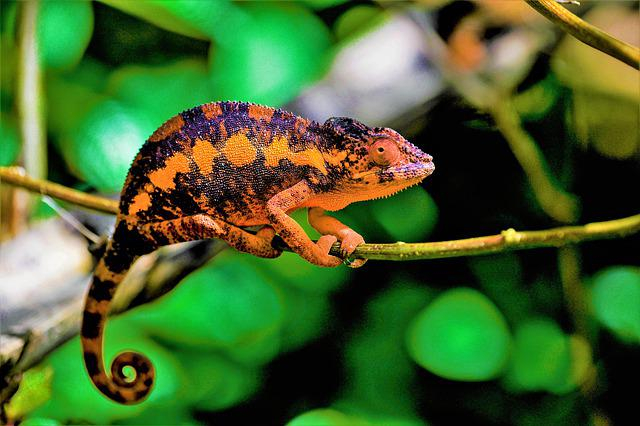
https://www.maxpixel.net/ -
Madagascar, with 592,800 square kilometers of land, is one of the world's largest islands. This is one of the things about Madagascar you should know. Greenland, New Guinea, and Borneo are ahead of it on the list. The country is located just over 400 kilometers (250 miles) off Africa's southeast coast and has a population of approximately 25 million people (World Bank, 2016). The fact that it has been isolated from its neighboring continents for millions of years is largely responsible for its distinct biodiversity.
For almost 160 million years, Madagascar has been cut apart from the rest of Africa. For millions of years, everything was permitted to evolve in relative solitude. Madagascar is unlike any other place on the planet. Madagascar, a small island around the size of Texas or France, is home to over 250,000 species, with 70% of them found nowhere else on the planet. It has been termed the eighth continent because of its unusual flora and wildlife, as well as its vastness.
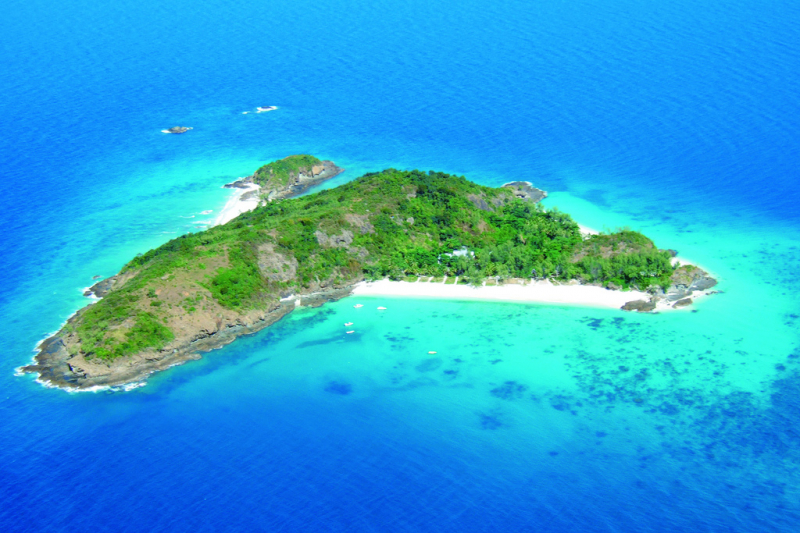
https://voyagesafriq.com/ 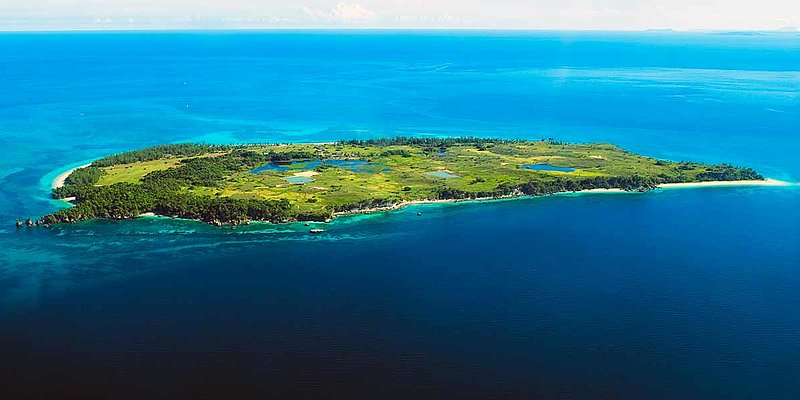
https://www.vladi-private-islands.de/ -
The culture of Madagascar is a strange, colorful fusion of elements from seafaring Borneans and Bantu Africans, Arabic and Tamil traders, and French colonization. There are 18 separate subcultures on the island, each with their own traditions and beliefs, and the Malagasy language is spoken in a variety of dialects. The cuisine reflects Madagascar's broad background as well, with components of East Asian, Chinese, Indian, European, and African cuisines, as well as rice (various) served with everything.
Particularly in Madagascar's more distant areas, there is a rich wealth of ancient rituals and spirituality to be uncovered. The burial tradition of famadihana is one of the practices you may still see today as practicing animists. This rite, also known as the turning of the bones, involves Madagascans bringing their ancestors' bodies out of their crypts and dancing with them while listening to music. While outsiders may be put off by the idea, realize that it is a means for the Malagasy to honor their ancestors.
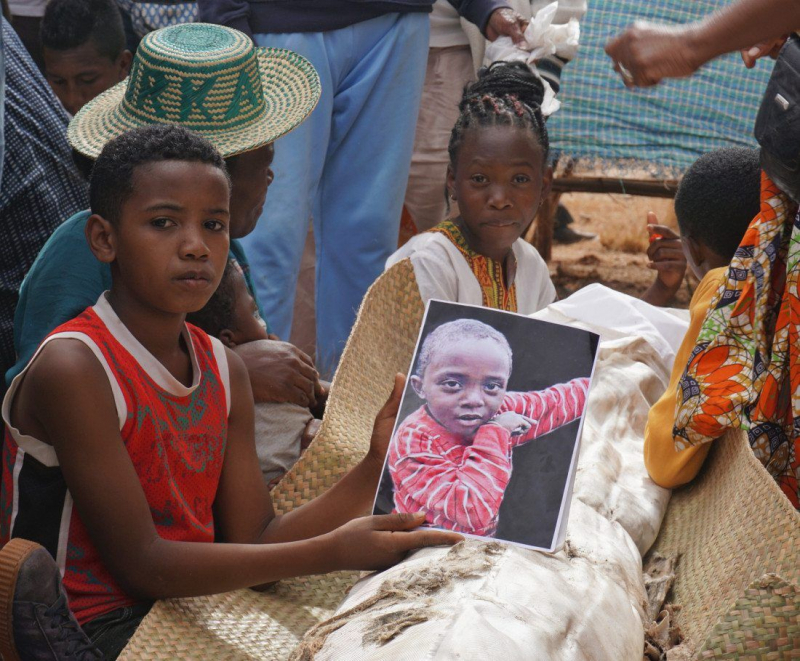
https://edition.cnn.com/ 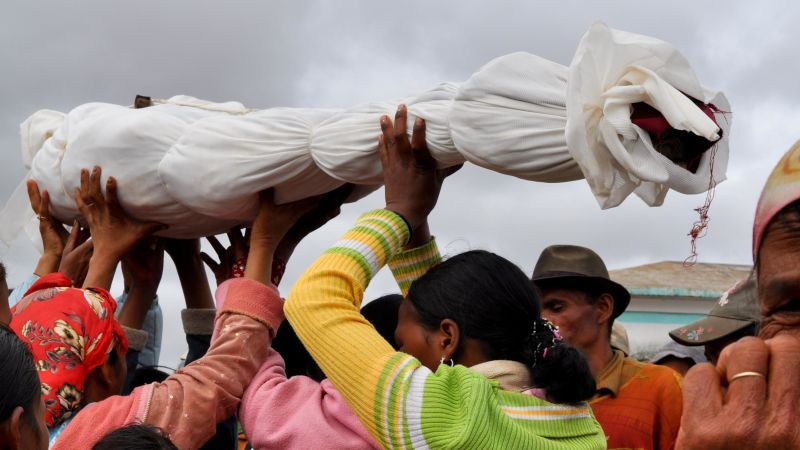
https://guyshachar.com/ -
The island was a haven for pirates during the golden period of piracy in the 17th and 18th centuries, because to its numerous quiet coves and the fact that it was not possessed by a European power. While on raids in the Indian Ocean, it was the ideal site to rest and repair their ships without drawing attention and acquire fresh supplies.
Madagascar's golden age of piracy occurred during what is regarded as the 'Golden Age of Piracy.' This refers to the period between 1650 and 1720, when thousands of pirates preyed on international trade lines. Blackbeard, Henry Morgan, and William Kidd terrorized the high seas, capturing commercial ships while eluding the Royal Navy's capture efforts.
Piracy was most widespread in the Caribbean and off the coast of Africa in the late 1690s, but more and more crews traveled into the Indian Ocean. The 'Pirate Round,' a sailing path that began in the Western Atlantic, traveled around the Cape of Good Hope, and ended in Northern Madagascar, was responsible for this. Crews would proceed for targets in the Indian Ocean after refueling, which were mostly East India Company ships departing from Yemen and India. Thomas Tew attempted the Pirate Round for the first time in 1693, and his journey was so successful that it sparked a piratical boom across the previously ignored Indian Ocean.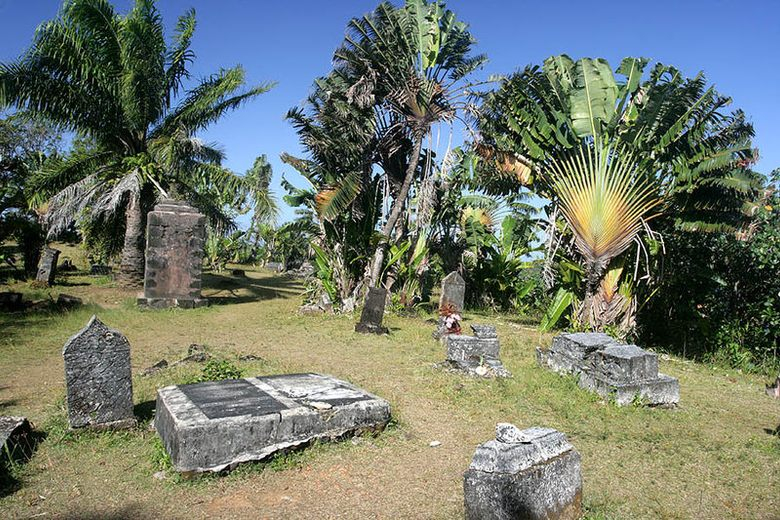
https://www.atlasobscura.com/ 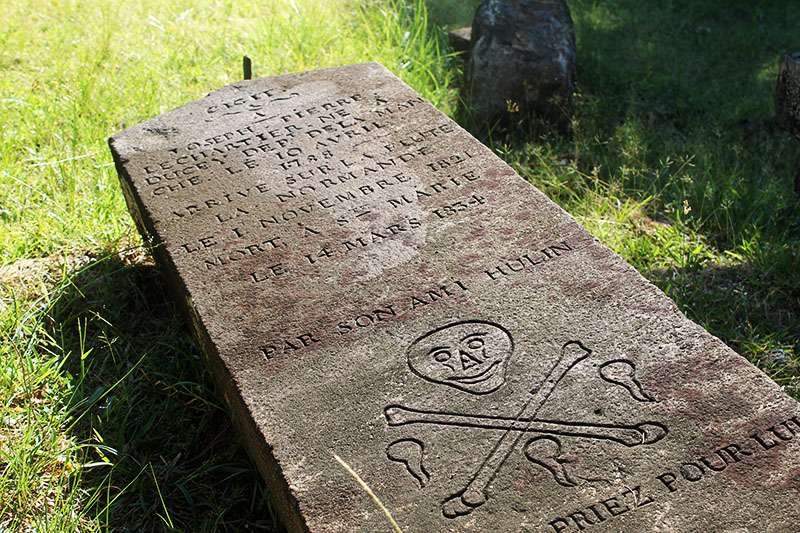
https://www.jenmansafaris.com/ -
If you like vanilla, Madagascar is the place to go because it produces the majority of the world's authentic vanilla. Many items can benefit from an 80 percent market cap ratio, but in the case of vanilla, it is the only vanilla flavor that many customers are familiar with. Bourbon, sometimes known as black vanilla, is made in the United States' northwest region. While the vanilla orchid is native to Mexico and pollinated by a rare bee, legend has it that a young French-owned slave on what is now Réunion Island discovered how to manually pollinate the orchids in 1841.
Vanilla plantations began to appear in Madagascar not long after. For a variety of factors, Madagascar remains at the top of the vanilla-producing countries today. It still has a favorable temperature for cultivating vanilla, and some sections are sufficiently forested for orchid vines to thrive. And wages in Madagascar are outrageously cheap. According to Bloomberg, Madagascar's minimum pay for agricultural employment is $0.18 per hour, which is 10 to 15 times less than other vanilla-producing countries. Every year, they export roughly 1000 tonnes of vanilla.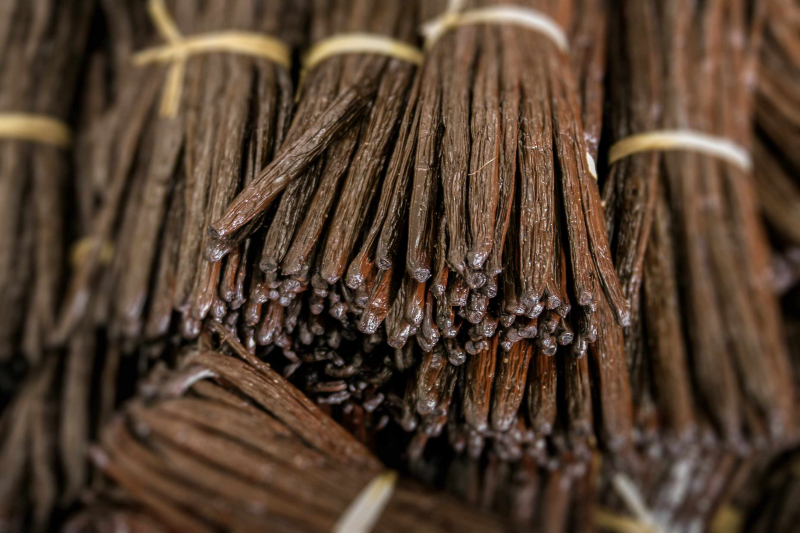
https://www.vanillabeankings.com/ 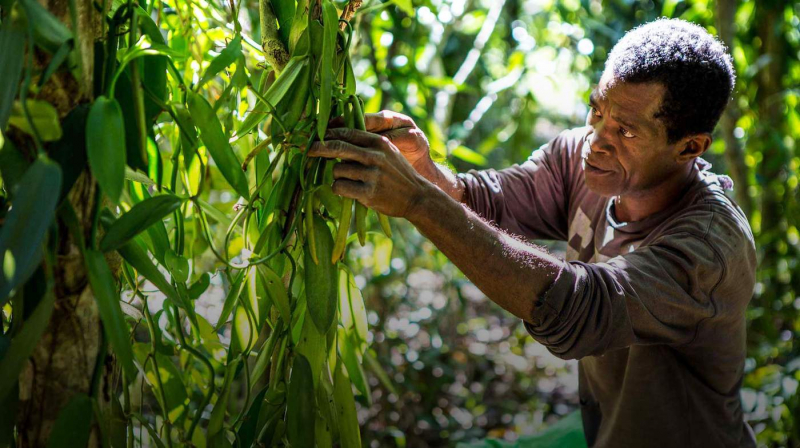
https://www.bbc.co.uk/












